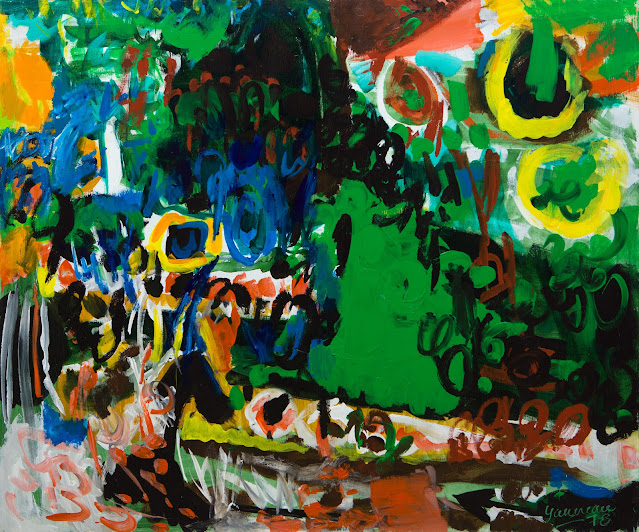Pierre Gauvreau (1922 –2011)was a Québécois painter who has also worked in film and television productions.He was born in Montreal, and studied at the École des Beaux-Arts de Montréal, today part of UQAM.
"Gauvreau was a signatory of the famous manifesto, Refus Global (Total Refusal), formed and published in 1948 by the Automatistes (1940s) and led by Borduas. The manifesto rejected formal academic strains of teaching and the Automatistes were heavily influenced by Surrealism and automatism. Of all the members, Gauvreau's favouritism towards a subconscious approach to painting: the freshness, the immediacy, and the freedom, solidified his work as "avant-garde". In 1977, after a hiatus of more than ten years during which his energies were absorbed by film and television, Gauvreau's colours intensified, his canvases grew larger, and he began working in a style that combined his earlier gestural brushwork with shapes and techniques associated usually with colour field and hard-edged painting: large areas of bright colour, geometric shapes, and the use of tape and collage to give sharply designated edges. Luxe, calme, et volupte" (Luxury, calm, and sensual pleasure) is the earliest example in this Retrospective.(gevik.com)

























































